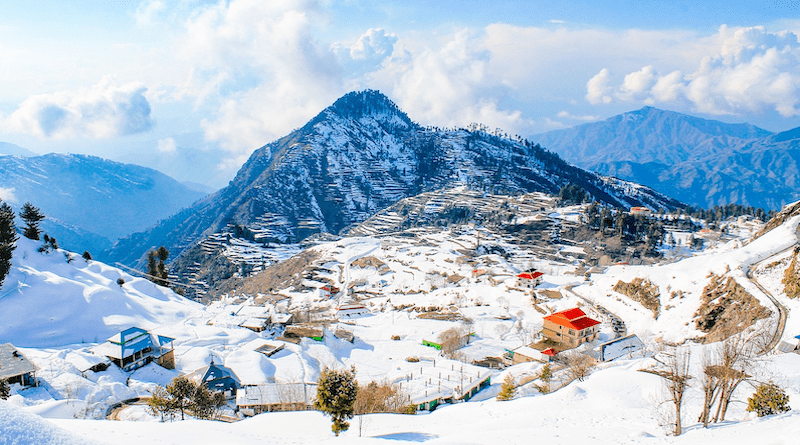Discovering Pakistan’s Hidden Gems – OpEd
By Dr. Sahibzada Muhammad Usman
Pakistan is a nation with a remarkable natural landscape and possesses a rich cultural legacy that can be traced back to ancient civilizations like the Indus Valley. The country prominently exhibits a wide array of historical sites, including the renowned Mohenjo-Daro and Harappa, which provide significant insights into the region’s abundant historical heritage.
The cultural diversity of Pakistan is enhanced by a wide range of customs and traditions that are representative of its varied ethnic history. The local culture of the region contains a diverse range of traditional music and dance forms, elaborate crafts, and folklore, which collectively serve as a monument to its abundant richness and remarkable variety. One salient aspect of Pakistani culture is its strong association with Sufism, wherein community assemblies and celebrations have significant importance as essential elements of this spiritual tradition, providing meaningful encounters for both indigenous individuals and tourists alike.
Pakistan exhibits a diverse range of cultural traditions via its vibrant array of festivals. The Lahore Literary Festival and Sindhi Cultural Day are notable occasions that draw the attention of both tourists and local residents, serving as platforms for commemorating Pakistan’s literary and cultural accomplishments. Pakistan boasts a vibrant art scene characterized by a multitude of galleries and exhibits that serve as platforms for the display and appreciation of the artistic prowess of indigenous practitioners.
The nation also possesses a wealth of musical traditions, with a diverse range of genres spanning from classical compositions to modern styles. The Coke Studio music television series has facilitated the exploration of Fairy Meadows, a picturesque location situated at the foot of Nanga Parbat, the world’s ninth tallest mountain, providing individuals with an enchanting and surreal encounter. The place gets its name from its almost mythical beauty, which offers a serene break from the busy city life.
Attabad Lake formed due to a massive landslide in 2010, a stunningly beautiful turquoise lake in Hunza Valley. While tragic in origin, the lake has become a popular destination for boating and fishing. The Deosai Plains is known as the Land of Giants and among the highest plateaus in the world. This area is a wildlife reserve and is especially famous for its rich flora and a variety of fauna, including the endangered Himalayan brown bear.
Tourism is increasingly being seen as a vital sector for economic development. The revenue generated from tourism can significantly boost the country’s economy and contribute to local development. Investments in infrastructure, such as better roads and hospitality services, are being made to attract more tourists. The Pakistani government is taking steps to digitalize the tourism sector. From online visa applications to digital platforms that allow tourists to book accommodations and transport, the aim is to make travel planning more convenient and efficient. Unfortunately, the potential of Pakistan’s tourism industry has been overshadowed by misconceptions related to safety and political instability. However, the country is working rigorously to improve its international image through effective counter-terrorism measures and diplomatic efforts.
Pakistan is home to religious diversity, evidenced by its historical landmarks. Badshahi Mosque in Lahore and the Faisal Mosque in Islamabad showcase Islamic architecture at its finest. Meanwhile, the Katas Raj Temples serve as an important pilgrimage site for Hindus. There are also several churches and gurudwaras representing the Christian and Sikh communities. Several conservation initiatives are underway to preserve the natural habitats and species unique to Pakistan. Wildlife sanctuaries have been established to protect endangered species like the Markhor, Snow Leopard, and various types of birds. Moreover, community-based initiatives aim to educate locals and tourists alike on the importance of environmental conservation.
Modern amenities are increasingly available even in remote tourist locations. At the same time, traditional ways of life continue to be celebrated, offering tourists an eclectic mix of old and new. From the hustle and bustle of cities like Karachi and Lahore to the pastoral beauty of villages in Punjab and Sindh, Pakistan provides a broad spectrum of experiences. The intricate handicrafts and textiles of Pakistan are another major attraction. Regions like Sindh and Balochistan are famous for their vibrant embroideries and handwoven carpets, which are not just souvenirs but a testament to the skill and tradition of Pakistani artisans.
One of the most frequently cited reasons tourists fall in love with Pakistan is the unparalleled hospitality of its people. Visitors often rave about the warmth and welcoming nature of the locals, which makes any trip to the country truly memorable.
To sum up, Pakistan is a treasure trove of natural wonders and cultural gems that are gradually gaining the recognition they deserve. Although challenges like safety concerns and infrastructure development remain, concerted efforts are in place to address these issues. The multitude of experiences offered, from natural beauty to cultural richness and adventure activities, makes Pakistan a must-visit destination for any avid traveller.

